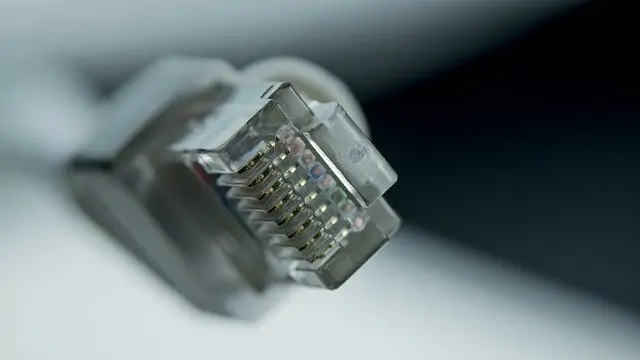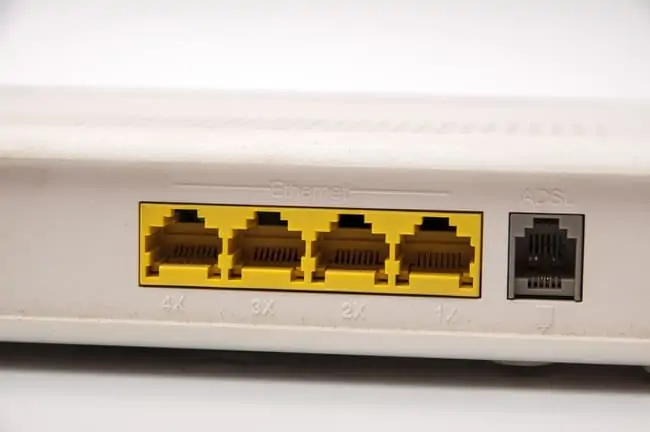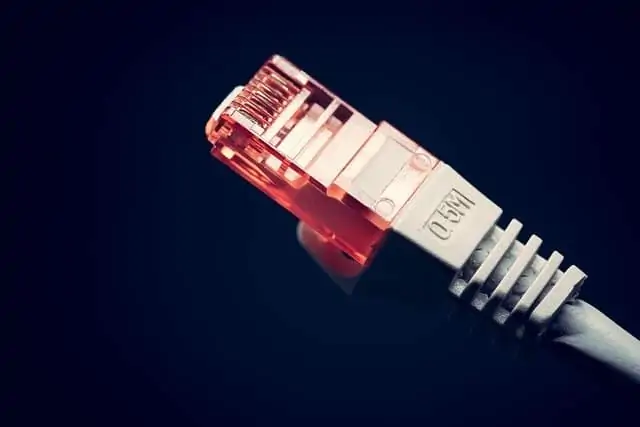This is a common source of confusion, because all these different categories of ethernet cable (Cat 5/5e/6/6e etc) can be very confusing. Non technical home internet users just want to know whether their ethernet cable will work properly with their router and devices.
For example, can you use Cat 6 or 6e ethernet cables with your router and get them to work fine? More generally, will any category of ethernet cable work with any router?
Cat 6/6e ethernet cables will work on any router, just like any other category of ethernet cable. All the end connector points are the same between the different categories, with the differentiating factors being the potential transfer speeds and reduced interference for Cat 6 versus Cat 5/5e.
In other words:
The category of ethernet cable doesn’t matter in regard to whether it works or not with your router. All the categories are backwards compatible, with the major difference being superior transfer speeds and reduced interference in the more recent Cat 6/6e cables.
Let’s look at the issue in more detail.
Cat 6 Will Work on Any Router
Cat 6 ethernet cables will work fine on any router, just as Cat 5 or Cat 5e cables would.
The 8 pin end connector point on all modern ethernet cables is the same:

It’s just that the internal wiring and structure is different between different standards to provide better speeds and less cross-talk (interference) on the later standards.
Therefore, here is a more general bottom line answer regarding compatibility of all categories of ethernet cable with all devices:
As long as your router or device has an RJ-45 Ethernet port, any ethernet cable of any category (5/5e/6/6e) will work when plugged into that port. The only differentiating factor will be the transfer speeds supported and possibly the level of cross-talk or interference.
The ethernet ports are the yellow ones:

All of these ports are the same on all routers and devices, so you can plug any category of ethernet cable into them and they will work.
The Different Categories Of Ethernet Cable Explained
Let’s briefly break down the differences between the major categories of ethernet cable:
- Cat 5 – The older form of ethernet cable, where the conductors are purely copper. Cat 5 was deprecated in 2001 and replaced by Cat 5e. Works at a frequency of 100 MHz and technically does support Gigabit transfer speeds (1000 Mbps), but just not very well. Very rarely used now.
- Cat 5e – An upgraded version of Cat 5, used since 2001. Has exactly the same bandwidth (100 MHz) and construction as Cat 5, just with upgraded specifications that remove cross-talk (interference). Therefore supports Gigabit speeds (1000 Mbps) more easily. So a more reliable version of Cat 5.
- Cat 6 – An improved standard of ethernet cable that supports performance of up to 250 MHz, and speeds up to 10 Gigabits per second up to 55 meters range. Also has improved construction standards that mean even more reduced cross-talk than Cat 5e.
- Cat 6a – Almost identical to Cat 6, but supports twice the performance (500 MHz), and further improvements over Cat 6 in reducing interference.
- Cat 6e – A newer form of Cat 6, but not officially recognized as an ISO standard. Commercially, some cables are still labelled as Cat 6e.
- Cat 7 and Cat 8 cables are also available, but are not widely used at the moment.
Category 6 and 6e cables are all fully backwards compatible with the 5/5e standards and ports. Therefore any cable will work with any device that has an ethernet port.
When To Use Each Type Of Cable
There’s no point forking out for Cat 6 cables if you don’t even need them. Here’s a quick summary of scenarios when it might make sense to use each category of cable.
When To Use Cat 5e – Will be perfectly fine for almost all residential internet packages, even super high speed ones. Supports speeds up to 1000 Mbps (1 Gigabit/second), which is pretty much as fast as almost all commercial internet plans go now. Cheaper than 6 or 6e cables, so most home internet users can stick with this.
When To Use Cat 6/6e – Will work fine with any router, but really only makes sense when you need super-high speed transfer speeds between 1 Gbps up to 10 Gb/second. If you’re lucky enough to have an internet service capable of speeds even greater than 1 Gbps, then could come in useful, but this is rare at the moment. Perhaps also useful when transferring large amounts of data over local networks, or for some businesses or large organizational networks (eg. campuses). But for standard commercial internet packages, really isn’t needed. You can do just fine with a Cat 5e cable and you’re just spending extra money unnecessarily in most cases if you get Cat 6/6e or higher.
